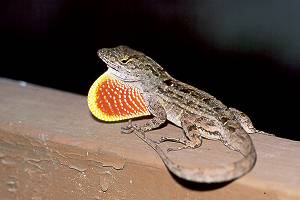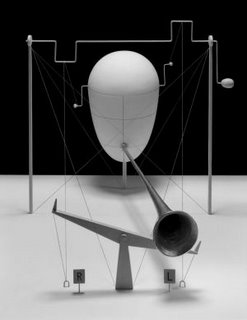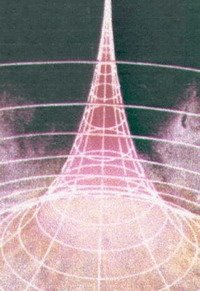 This is the opening to an essay I am writing on Allan Peterson's work. I thought I would post it piece by piece because I got so carried away writing it. Hope you enjoy it.
This is the opening to an essay I am writing on Allan Peterson's work. I thought I would post it piece by piece because I got so carried away writing it. Hope you enjoy it.
All The Lavish In Common: In The Nick of Time and Theory
On Taking a Line and its Dent for a Walk Until It Becomes A Fissure
In one of his poems from this collection, Peterson says “my bags go on without me
labelled density and pressure”. The same could be said for the poems themselves yet you never have the feeling that that the poet is striking out on new “big idea” poems, or that he is delighted to present ‘a telling detail’ for your delectation. It’s nothing personal; he does not feel diminished by his place in the world, or surprised by what goes on in it. After all, many things are possible, and frequently the impossible is too.
With Peterson the poem occurs in the telling, a telling that mirrors the process of reflection, where some aspect of the poet is at sea, and can almost be seen in its process of thinking. His journey cannot take everything in and knows it leaves something out, a lot out. It will thus never be a whole telling, “I cannot finish I mean”. What is important is thus to understand the process of selection, what is included in the poem. They pivot upon objects of memory and thought, but they must have adequate force to be selected, and followed. At first reading, you may think that this is a poet following the a line of thought, or taking a line for a walk, but on closer inspection, there are deep structures at work here.
Recent books by James Longenbach on The Resistance of Poetry, and the essays on poets like Bishop foreground ideation and the presentation of ideation as one of the major achievements of modern poetry. A part of its attractiveness is seeing how the poets mind moves, and to be brought into that movement by them, and thus, have our experience of experience enlarged. To better illustrate this point, I am going to linger in detail on an early poem in the collection called “Private Lives”. Many of the image structures, and poetic strategies are present here. The opening lines,
“How orb-weavers patch up the air in places
like fibrinogen, or live in the fence lock”
Well, the orb-weaver is an American bird that can apparently make its nests in locks. Much could be said of this: there are no locked fields, nature will inhabit all, your separate fields are but one field. But there are three word connections that just draw your attention in to make these lines happen in the mind: ‘orb’, ‘fibrinogen’, and ‘lock’ (supported by how, or, and live). Orb, is an unusual general word, associated with the globe, or the world, it has connotations of the old, the regal, the medieval. Fibrinogen, is a scientific term for the growths (fibres, materials, texts) that grow and thicken in the lung, they cause shortness of breath, they darken the lung, they would appear dark on an x-ray, as we can only see our lungs in negative. Yet the orb-weavers in their physical flight, seem to metaphorically patch up the air with their traces, and in very “real” physical terms they patch up the available space inside a fence lock, a space perhaps as impossible to live in and patch up, as the air itself. I think this is a very neat use of modulating vocabulary, negative space, metaphorical space, and analogy. I could go on to say that Fibrinogen carries fetid, morbid overtones, that the transmuting of the imagery from such negative spaces as “lungs/air”, “bird-trace/morbid-growth” stretches the reader, until the image cluster lands in its completely physical lock. (The image cluster repeats later in :”you will see moth clouds/ that are moving breaths”). In the next lines,
“How the broom holds lizards.
How if you stand back you will miss them
afflicted by sunset,
the digger bees mining in the yard,
birds too fast to have shadows,
the life that lives in the wren whistle.”
Here, a little playfully, we are told that the broom could/does/ potentially hold lizards, as presumably the air could hold the traces of bird flight. But observe, the digger bees at sunset, forced underground (interestingly, and ominously, “afflicted”, thus perhaps forced under), and birds that move so fast they don’t leave shadows (because the sun is perhaps too low, because they are in a hurry, because the world does not need these birds to have shadows) and observe too that life (with a big L) is contained in the wren whistle, that smallest of birds, that smallest of details. But in the background here, are ominous forces, shadows, relations we may miss. There is urgency in the lines. Having drawn up a nature-scene, having had us metaphorically “look down” at the birds in the lock, the broom in the corner, the bees on the ground, the no-shadows of birds flying over, he next directs our gaze back upwards, look…
“You will see moth-clouds
that are moving breaths
and perhaps something like the star
that fell on Alabama
through the roof of Mrs. E. Hulitt Hodges
and hit her radio, then her.
No, you must be close for the real story”.
Perhaps its me, but I think this is going from the general (the star) to the particular (Alabama) to the general/particular (the house of Mrs. E. Hulitt Hodges, a general house of a very specific woman, with a very specific name), to the really particular, to the comical Radio. This is a surprising “turn” in the poem, in both style, theme, and image-structures. We might have turned left and ended up in another poem entirely. But wait, the last line is a hinge of memory “you must be close for the real story”, close to the bees, the birds, the dramas of the barnyard floor. From where did this impulse come; why from childhood, from schooldays:
“I remember being made
to stand in the corner for punishment
because it would be dull and empty
and I would be sorry.
But instead it was a museum of small wonders,
a place of three walls
with a weather my breath influenced,
an archaeology of layers, of painted molding,
a meadow as we called them then
of repeatable pale roses,
an eight-eyed spider in a tear of wallpaper
turning my corner.
The texture. The soft echo if I talked.
If I said I am not bad if this is the world”.
It’s a rush of. recognition, or revelation. It occurs to him now as it occurred to him then: there are no small places. If you pay attention, in a place of three walls, paying attention and being open ‘disappears’ one wall of this metaphorical prison. History and time can come off in layers, where even though the observer influences the thing observed, life has a lavish texture, and if you listen and observe the world echoes back your deeper delving with further revelation. This opening up of the world saved him. Do you remember being in a corner and speaking, and hearing that soft echo, playing with it? I do. For me the poetry is in the remembering of that small soft echo coming back to him, and the reader connecting to an early, near atavistic sense-memory.
So much has happened in the poem, so many “happenings” have occurred in us as the revelation of relationships has been opened up to us. We made those connections as readers, we didn’t just join the dots. Yet we seem to have walked through a simple narrative. This is Peterson’s great skill. We walk through simple-seeming narratives, albeit at times with strange turns into unknown registers, through modulations in tone, in scene, in aspect, but we are made beings that bear strange relation, and we bear it unknowingly, into the known.
Categories: poetry, ireland, irish, crit, literature, criticism, contemporary, american,




